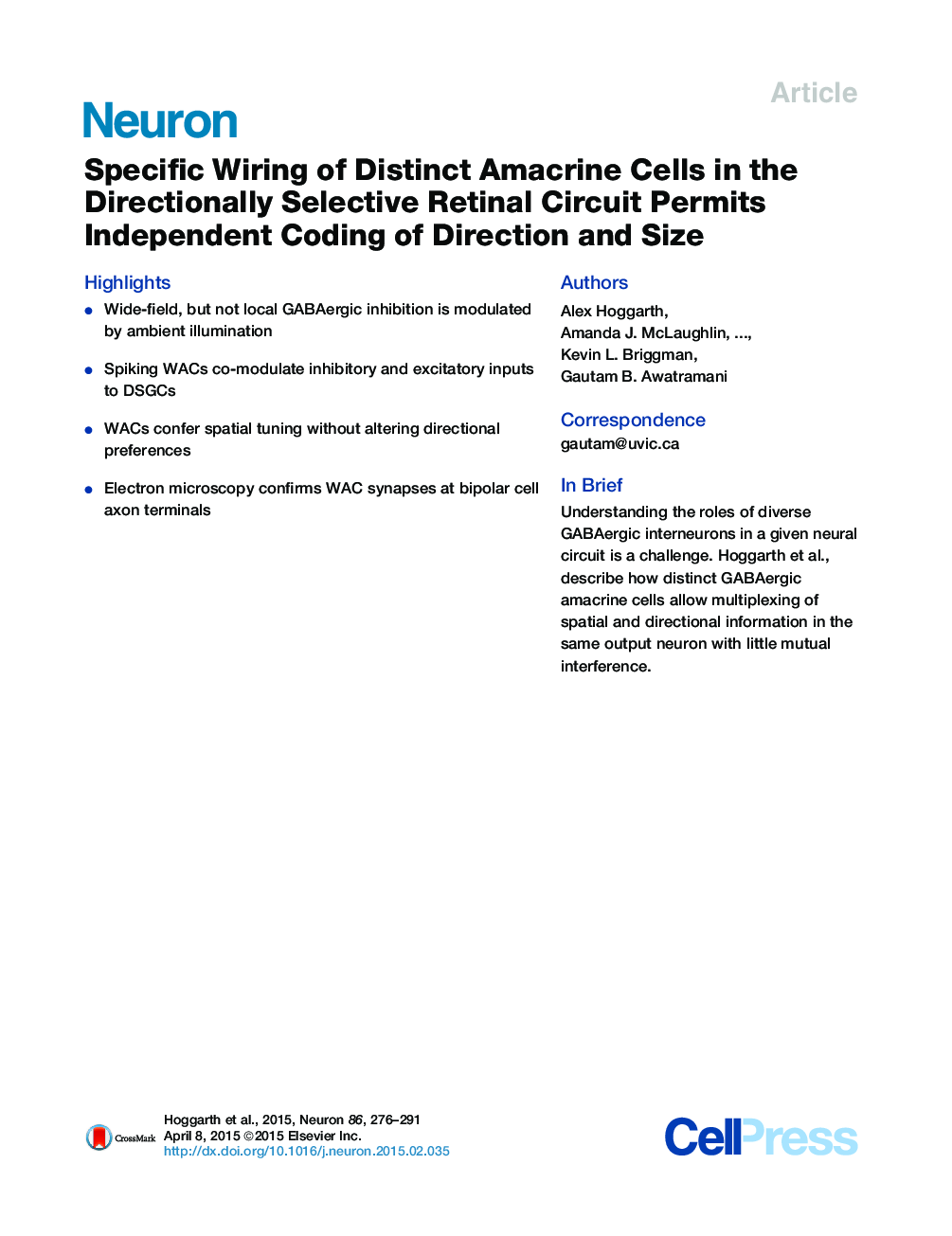| Article ID | Journal | Published Year | Pages | File Type |
|---|---|---|---|---|
| 4321012 | Neuron | 2015 | 16 Pages |
•Wide-field, but not local GABAergic inhibition is modulated by ambient illumination•Spiking WACs co-modulate inhibitory and excitatory inputs to DSGCs•WACs confer spatial tuning without altering directional preferences•Electron microscopy confirms WAC synapses at bipolar cell axon terminals
SummaryLocal and global forms of inhibition controlling directionally selective ganglion cells (DSGCs) in the mammalian retina are well documented. It is established that local inhibition arising from GABAergic starburst amacrine cells (SACs) strongly contributes to direction selectivity. Here, we demonstrate that increasing ambient illumination leads to the recruitment of GABAergic wide-field amacrine cells (WACs) endowing the DS circuit with an additional feature: size selectivity. Using a combination of electrophysiology, pharmacology, and light/electron microscopy, we show that WACs predominantly contact presynaptic bipolar cells, which drive direct excitation and feedforward inhibition (through SACs) to DSGCs, thus maintaining the appropriate balance of inhibition/excitation required for generating DS. This circuit arrangement permits high-fidelity direction coding over a range of ambient light levels, over which size selectivity is adjusted. Together, these results provide novel insights into the anatomical and functional arrangement of multiple inhibitory interneurons within a single computational module in the retina.
